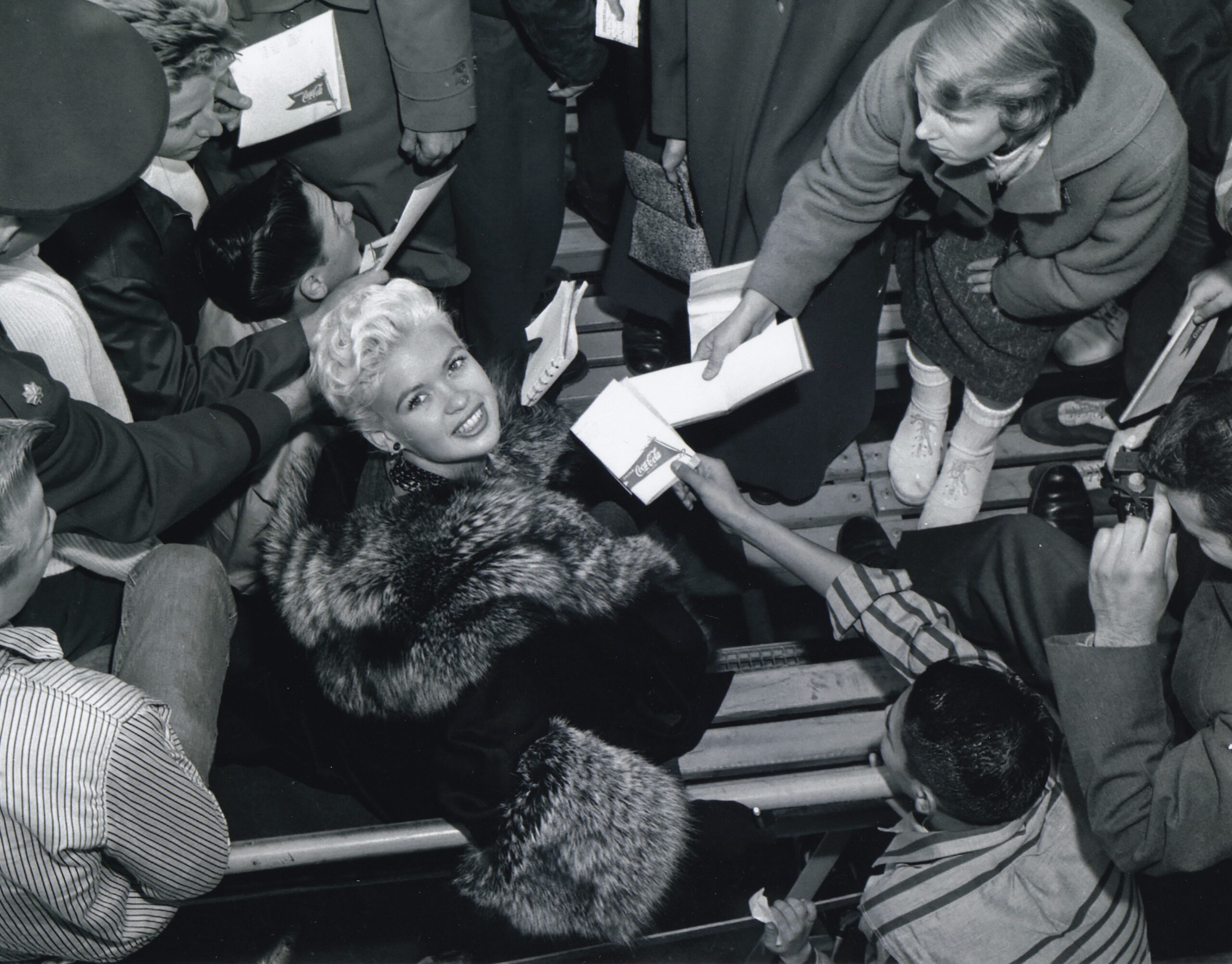New HBO Max Documentary From Her Daughter Mariska Hargitay Reveals Insight Into The Bombshell Actor’s Life
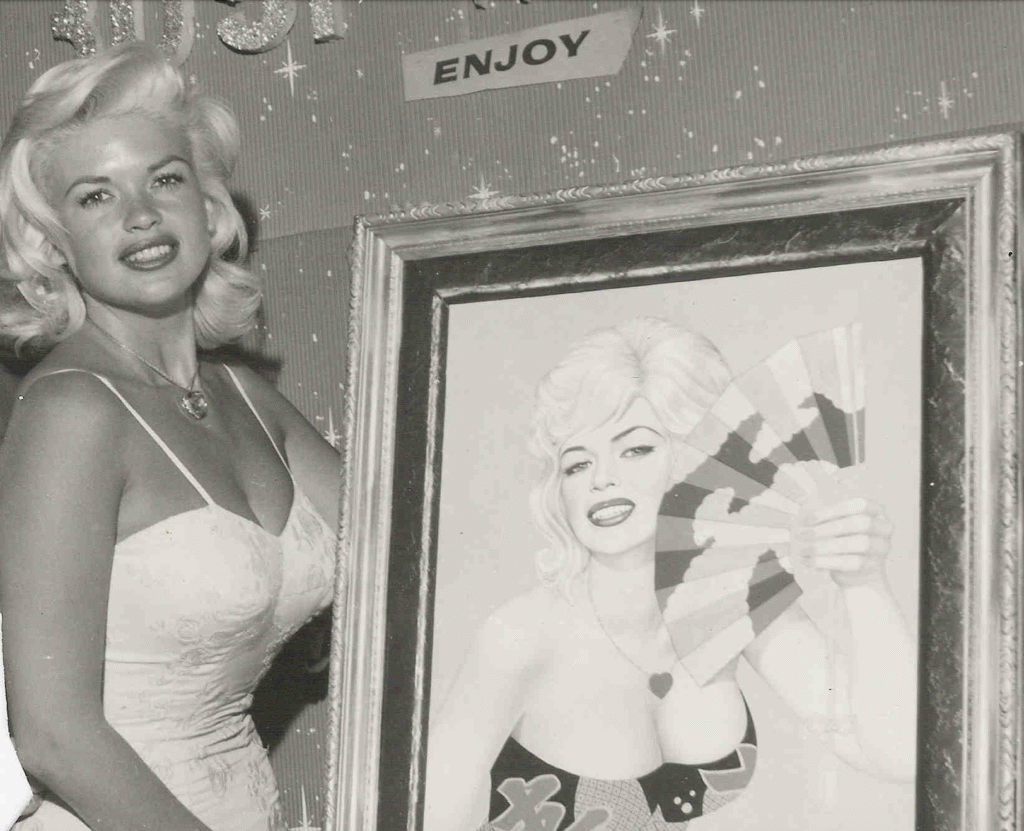
When Dallas, Texas-bred Jayne Mansfield moved to Los Angeles, she knew what she wanted. That giant-sized ambition fueled a career during the waning days of Hollywood’s Golden Age, leaving a timeless legacy. Here, our culture chronicler, Lori Duran, shares insights into the glamorous life and career of the remarkable mid-century bombshell. The HBO Max documentary on Mansfield that debuts June 27, created by her daughter, TV star Mariska Hargitay, is also sure to add more understanding to the complex life of the 1950s bombshell.
Jayne Mansfield was a movie star in the late 1950s who was determined to achieve fame at a young age. As a little girl, Mansfield idolized the tiny 20th Century Fox studio star Shirley Temple, an example of a movie star whom she aspired to become. Once she arrived in Tinseltown, she capitalized on the by-then familiar blonde bombshell routine. Many famous blondes had come before her to great success, like Marion Davies, Carole Lombard, and Betty Grable, to name a few. Many had also failed. To rival her contemporaries, such as Marilyn Monroe and Sophia Loren, Mansfield used her considerable intelligence to create publicity with an image as a seductively styled celebrity. She was Mensa-smart, a detail that was noteworthy in a world of publicist-invented elements designed to elevate a potential star above the pack of Hollywood hopefuls who fell off the bus at Hollywood Boulevard and Vine Street, seeking fame and fortune. Along the way, she married and divorced three times and had five children. Yet, Jayne had the grit and determination that took her to the heights of fame while juggling multiple responsibilities. She was, in a word, unforgettable.
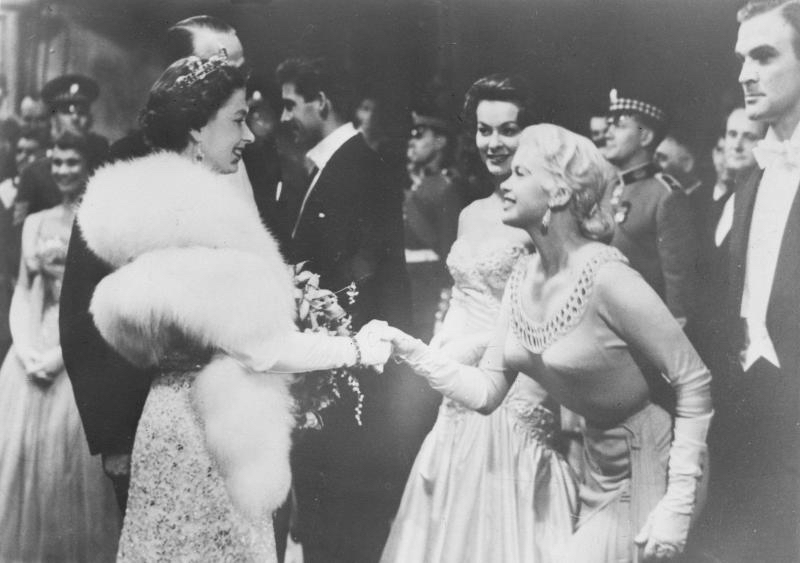
PATH TO STARDOM
Jayne Mansfield, the woman destined to be a movie star, was born Vera Jayne Palmer in 1933 in Bryn Mawr, Pennsylvania, to attorney Herbert W. Palmer and his wife, Vera. In 1936, her father died. Vera married Harry Peers three years later, and the family moved to the tony Highland Park enclave of Dallas, where Mansfield was known as Vera Jayne Peers. The future ingenue later said she always felt like a Texan and always loved the cinema. She idolized the film stars of her youth and was determined to pursue a career in acting. By the time she turned five, she was singing for anyone who would listen, including her gigantic collection of stuffed animals. At seven, she would stand in her driveway and play the violin for passers-by. Though her idols changed over the years–from Shirley Temple to Gene Tierney, Hedy Lamarr, and Jean Harlow–they were always movie box office stars who served as inspirations.
She attended Highland Park High School and graduated in 1950. Her high school yearbook photo shows a brunette Jayne who participated in orchestra, the Hi-Lites girls’ service club, and the riding club. Early in life, she started a family, marrying her high school sweetheart and having a baby girl, just six months after graduation. In November of 1950, Jayne Marie Mansfield was born to the 17-year-old Vera Jayne and her husband, Paul Mansfield. As a young mother and newlywed, she participated in local theatre, and in 1951, she enrolled at Southern Methodist University to study acting. In 1952, the Mansfields moved to study at the University of Texas at Austin, where she was a member of the drama department’s Curtain Club. She would then go on to act and practice her craft in numerous plays at the Austin Civic Theatre, later to be renamed the Zachary Scott Theatre.

During the Korean War, Paul left for Army reserve duty, but her husband’s tour of duty and the birth of her new baby did not divert the potential star’s aspirations. Before leaving, Paul relented and promised her that when it was over, the family would move to Hollywood. Two years later, when Paul returned home, the little Mansfield family started for California. However, Paul stayed in Tinseltown for only a few months. With his wife’s hair now dyed peroxide blonde and her unrelenting career drive, Paul Mansfield grew dissatisfied and returned to Texas. Even after they later divorced and Jayne remarried, she kept the last name Mansfield because she thought it sounded illustrious. And then she began to use her middle name, Jayne.
In 1954, when the 21-year-old Jayne arrived in Los Angeles to stay, she glowed bright and burned with ambition. She pushed forward to be in the movies, taking on odd jobs such as working as a candy vendor at a movie theater and modeling in men’s magazines. She was signed to Warner Bros. Studio after a talent scout discovered her in a production at the Pasadena Playhouse, a breeding ground for potential talent, then and now. Her persistence paid off, and the studio began awarding her bit parts until she was noticed. Within just a couple of more years, she was receiving prominent billing in successful films.
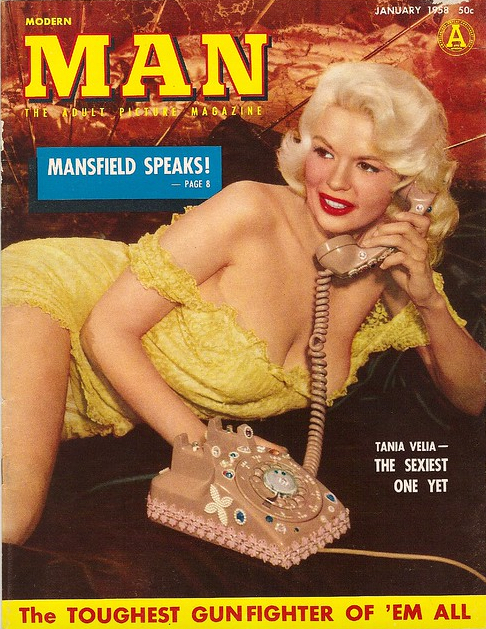

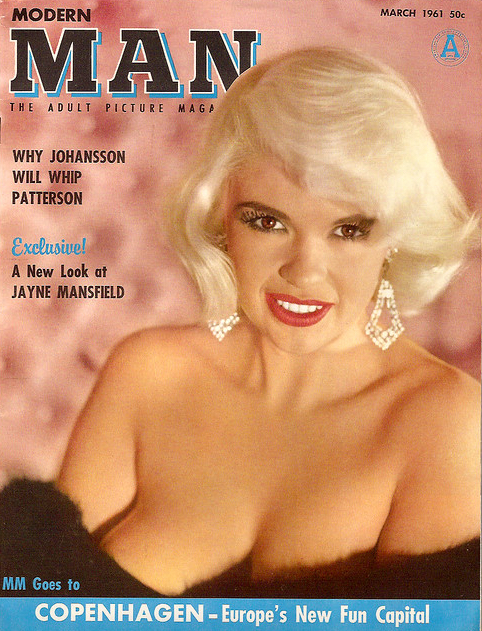
Then, Fox studios signed Mansfield as a replacement for their major contract star, an increasingly troubled Marilyn Monroe. Jayne’s acting in The Girl Can’t Help It (1956) would turn out to be one of her best roles–she almost portrayed herself. That was followed by Will Success Spoil Rock Hunter (1957), which demonstrated her humor-filled personality. For that, she received a Golden Globe Award nomination as New Star of the Year and went on to win a Golden Globe for her performance in The Wayward Bus (1957). Her other mainstream starring role film successes followed in the late 1950s, such as Kiss Them for Me (1957) and The Sheriff of Fractured Jaw (1958). She promoted her films with robust gusto as few other movie stars did. Most stars disliked the rote promotional appearances that she relished, from supermarket openings to interview shows. In 1957, she embarked on a whirlwind tour of Europe to entertain the U.S. troops stationed there and support the release of Kiss Them For Me, a military soap opera co-starring Cary Grant. Being the morale builder that she was, hundreds of photographers and waiting fans greeted her at the airport upon her arrival. She was even presented to Queen Elizabeth.

Publicity photo courtesy of 20th Century Fox archive
LOVE & MARRIAGE
In 1958, Jayne Mansfield married Hungarian-born bodybuilder Mickey Hargitay, who left Mae West’s act to join Jayne on stage with her cabaret nightclub performances and co-star in the film The Love Of Hercules (1960). They would have three children, Miklos Jr., Zoltan, and Mariska. Usually, having multiple young children would have slowed down other performers, but it did not derail Jayne. By 1958, Jayne had been asked to appear in nightly performances at the Tropicana in Las Vegas, where she sang, danced, and joked with the audience. She loved being able to interact with her fans personally, and the Tropicana loved the crowds she drew. Her performances played to a packed house every night. It was the beginning of a long-standing, successful nightclub career for the star. Starring in several hit television shows of the era, including The Alfred Hitchcock Hour, Burke’s Law, and Kraft Mystery Theater, among others, also brought fame during this period.
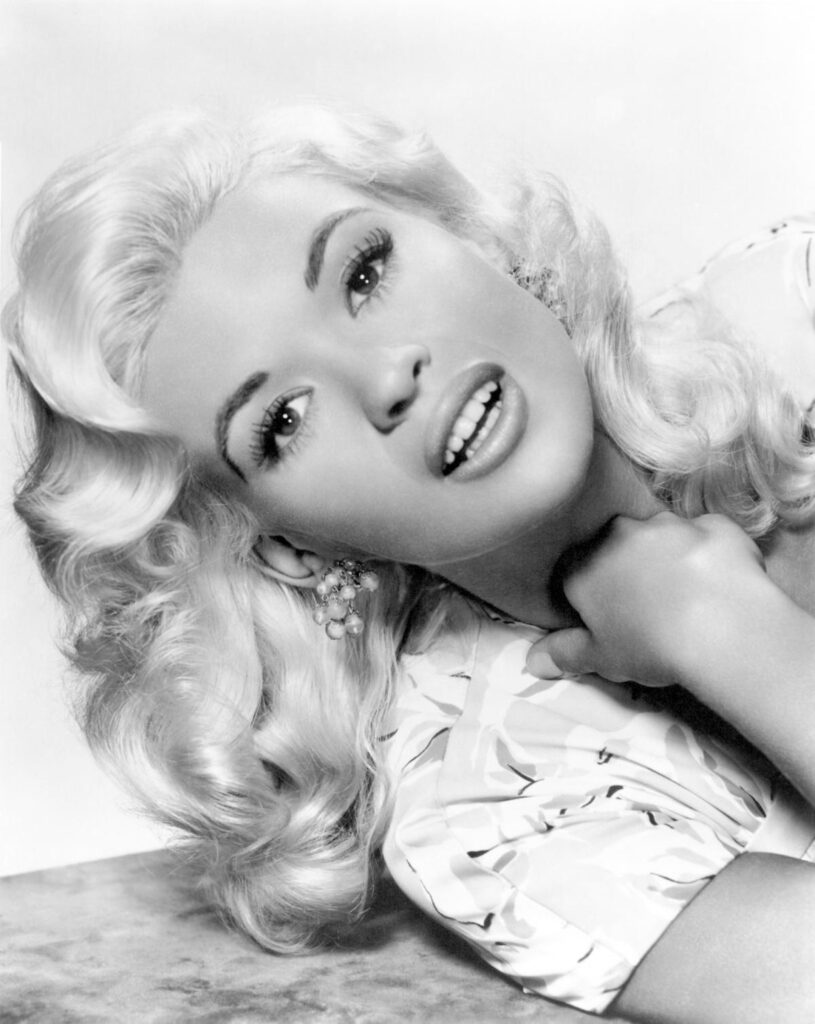
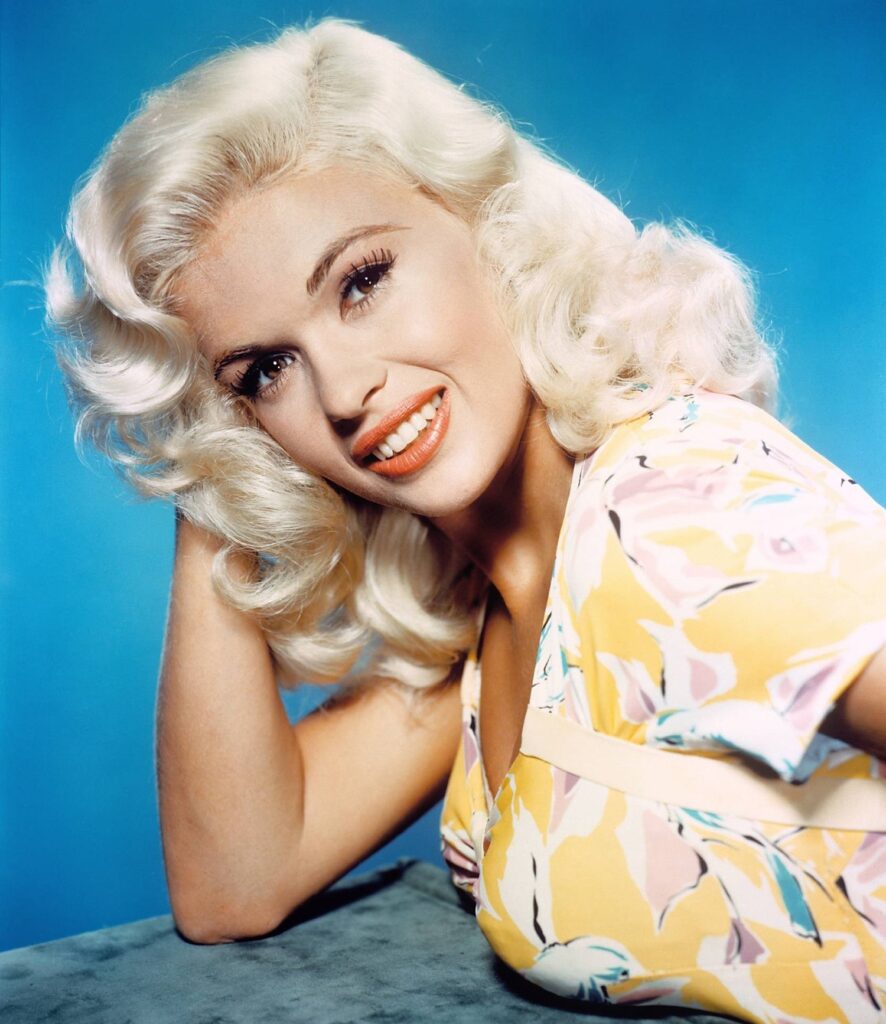
Along the way, Mansfield branded herself with the color pink. In November 1957, shortly before her marriage to Hargitay, Jayne used money from an inheritance to buy the Mediterranean-style mansion, once owned by Rudy Vallée, in Beverly Hills. Immediately, the house was painted pink, complete with Cupids surrounded by pink-fluorescent lights. She even had pink fur in the bathroom, a pink heart-shaped bathtub, and a fountain that bubbled with pink champagne. And she dubbed it the Pink Palace. Hargitay built a pink heart-shaped swimming pool, and she began riding in a pink, convertible Cadillac complete with tailfins. She was riding high and at the peak of her film career when, in 1960, she received a star on Hollywood’s Walk of Fame for her contributions to film. Jayne had become a celebrity, but not because of her best qualities. She spoke five languages fluently and boasted a Mensa IQ of 163. Even Mansfield admitted her public didn’t care about her brains, yet instead, “they’re more interested in 40-21-35”. To stand apart from her Hollywood competition of the era, she was keen on publicity. She invented her own “wardrobe malfunction” to show off her natural assets to their best advantage.
“I’ll always remember the time in the late 1950s when Jayne, Mickey, and I were in their pink Cadillac going to a radio station for a publicity interview one afternoon,” recalled Gretchen Fine, a long-time Hollywood publicist who represented Mansfield at the time, and much later became a great friend of Curated Texan’s Lance Avery Morgan. “It was on the way to a personal appearance I had booked, promoting a new film Jayne had coming out. Mickey was coaching her in the back seat, and Jayne kept quieting him, telling him that she knew exactly what she was going to say. And she did. Jayne always knew her stuff. She was funny and very sweet. She was also incredibly smart.”
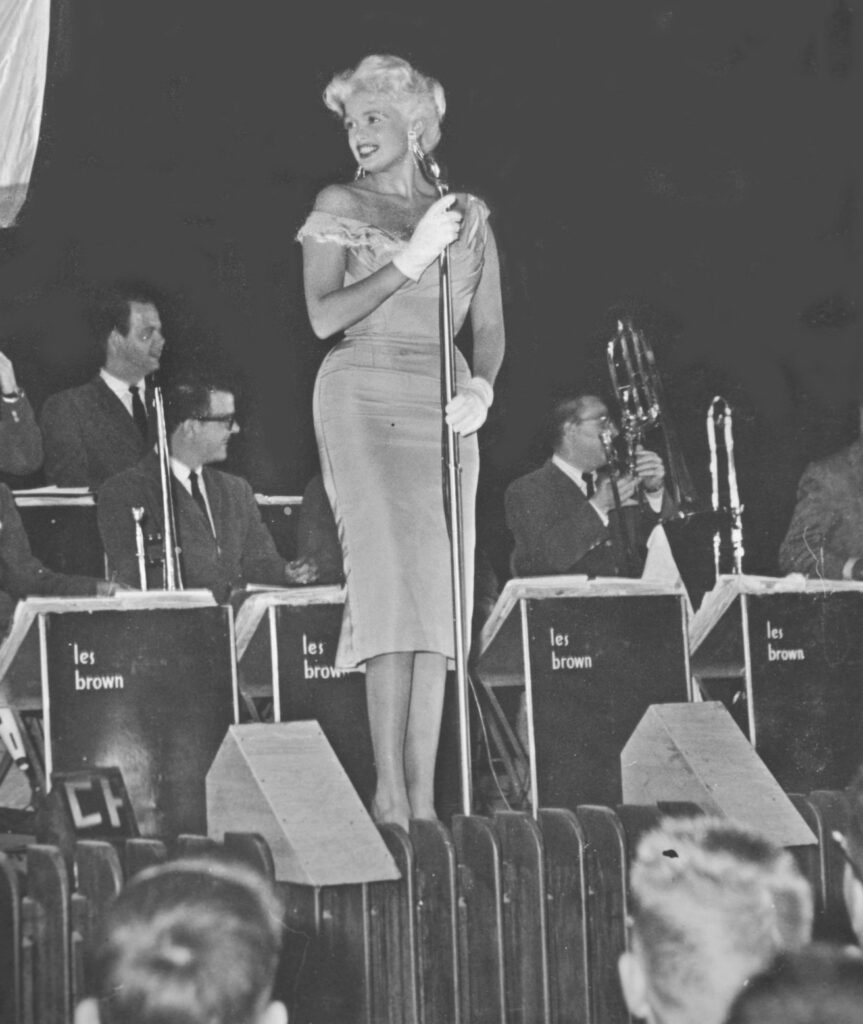
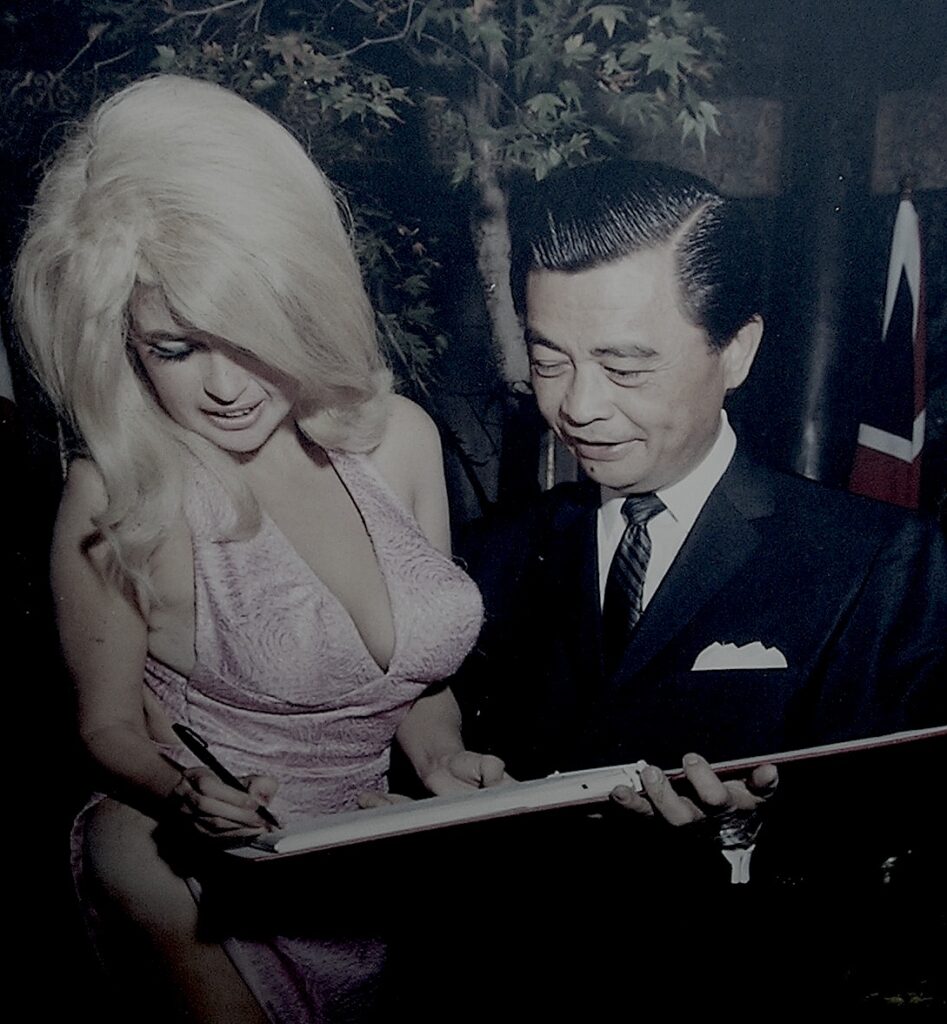
Wikipedia Commons
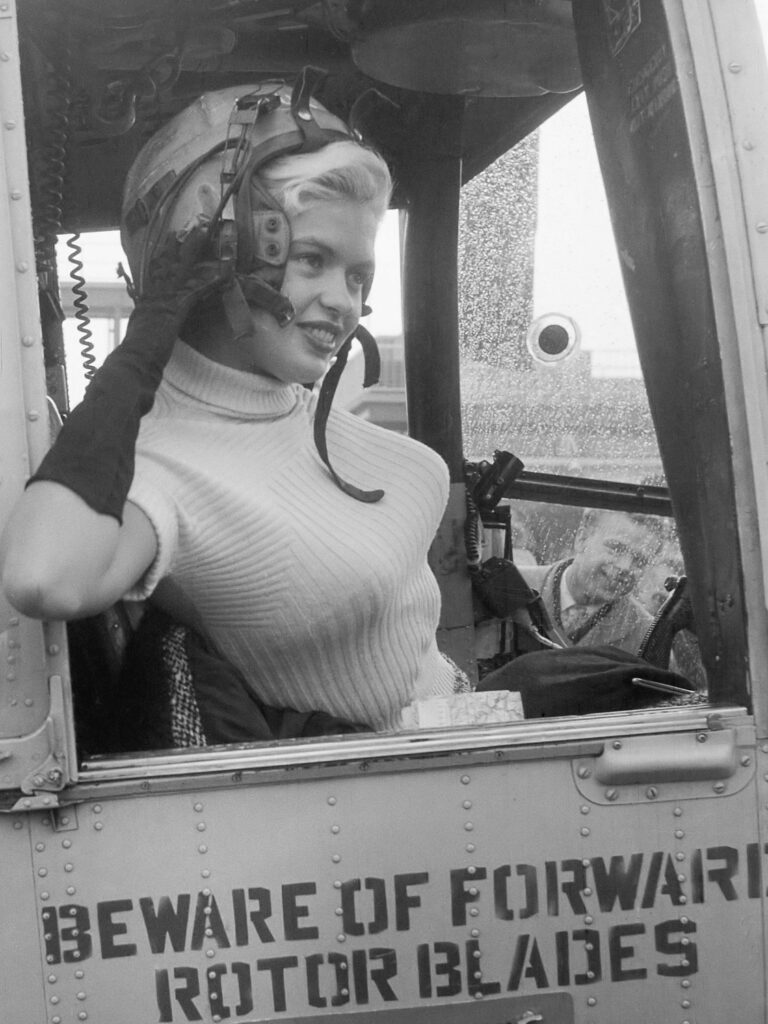
She turned heads as a voluptuous, dumb-acting, glamorous blonde movie star. However, some of her self-promotional antics went too far in the minds of media tastemakers of the era. Her on-screen career included only a couple of dozen films. Some of those films elevated her career, while others fell short of her talents. Both on and off-screen, she cultivated her style to perfection. Her distinctive speech included soft-voiced coos punctuated with squeals. But it was Mansfield’s exhibitionistic ways that would limit her career, especially when she appeared in the overtly sexy movie Promises, Promises, and made appearances in Playboy magazine, which was often considered taboo at the time in Hollywood. Consequently, 20th Century Fox studio dropped her contract, and Hargitay divorced her.
In 1964, the newly divorced Mansfield married director Matt Cimber. In 1965, they had a son named Anthony (Tony), their fifth child. She was the ultimate working mother, at a time when that was not admired like it is today. Her time was split between a nightclub tour and the production of her mostly forgotten final film, Single Room Furnished, which was directed by her husband. Reportedly depressed with her career slump, Mansfield was drinking. At the advice of Cimber, she even rejected the role of Ginger in TV’s Gilligan’s Island; the part of the Hollywood bombshell went to Tina Louise.
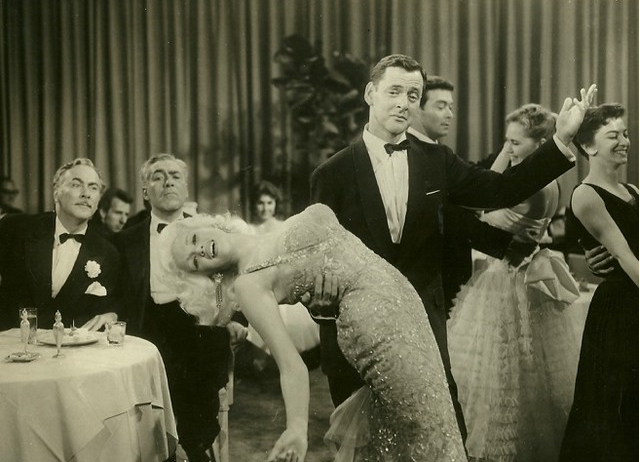
Courtesy of 20th Century Fox publicity archives
Mansfield would go on to work in low-paying B-movies with the occasional appearance in a more respectable film. Her physical attributes were no longer sustaining her original popularity, nor were they paying off handsomely. In 1966, Matt Cimber divorced Jayne, and she became romantically involved with her attorney, Sam Brody. Now, Mansfield only garnered press recognition for news such as when she was named in a divorce suit by Brody’s ailing wife. Jayne was once one of the most glamorous rising stars of the movie industry, a rival to Marilyn Monroe, but by the mid-sixties, she was no longer headlining mainstream films. Unfortunately, her entertainment career was tragically cut short after just 13 years. However, Jayne Mansfield was one of those people you cannot forget, either through her movies or by the circumstances of her death.
CAREER TWILIGHT
In June of 1967, Jayne Mansfield was performing at Gus Stevens Supper Club in Biloxi, Mississippi, where she put on two nightly shows at 9:00 P.M. and 11:00 P.M. After a June 28th evening engagement, Mansfield left at 2:30 A.M the next morning, June 29, for an early New Orleans TV show interview and promotional appearance. Inside the car with her was the driver, Brody, three of her five children, and her Chihuahua dogs. The new Buick sped down a winding, narrow stretch of U.S. Hwy. 90, just west of the Rigolets bridge. Sadly, visibility was poor that night, and it’s possible the driver didn’t see the tractor-trailer rig before their car plowed into it. The tractor-trailer had halted behind a city vehicle spraying the Louisiana swamps with pesticide. As their car hit the rear of the truck, it underrode the trailer, and the roof was practically sheared off. All the adults and dogs were in the front seat and died on the scene. The three children, in the back seat, suffered some injuries but lived. Jayne was laid to rest in Fairview Cemetery in Pen Argyl, Pennsylvania. There is also a cenotaph dedicated to her in the Hollywood Forever Memorial Park in Los Angeles.
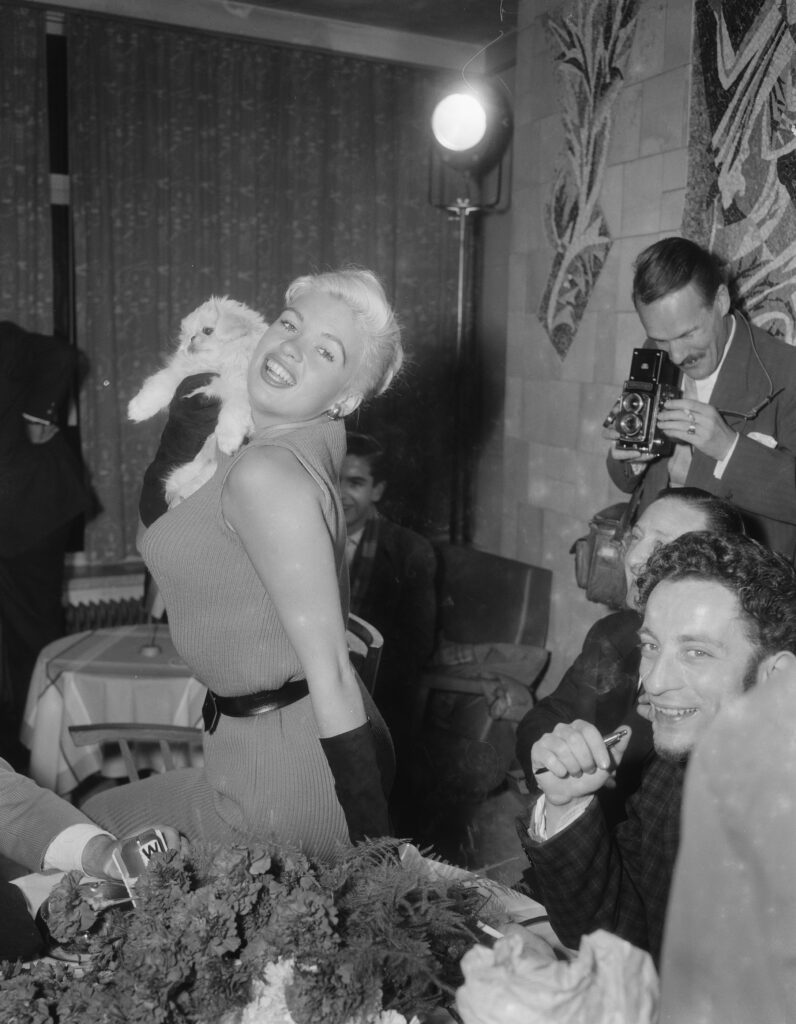
Photo by Harry Pot, Anefo. Courtesy of Wikipedia Commons
The tragedy of Jayne’s death led to “underride guards,” also known as Mansfield bars or bumpers for semi-trucks that help prevent the under-riding that claimed so many lives in that era. In the aftermath, Mansfield’s pink palace was sold, and its subsequent owners have included Ringo Starr and Engelbert Humperdinck. Humperdink sold the house to developers in 2002, and it was demolished a few months later, including its famous heart-shaped pool, which had offered numerous publicity opportunities for Mansfield.
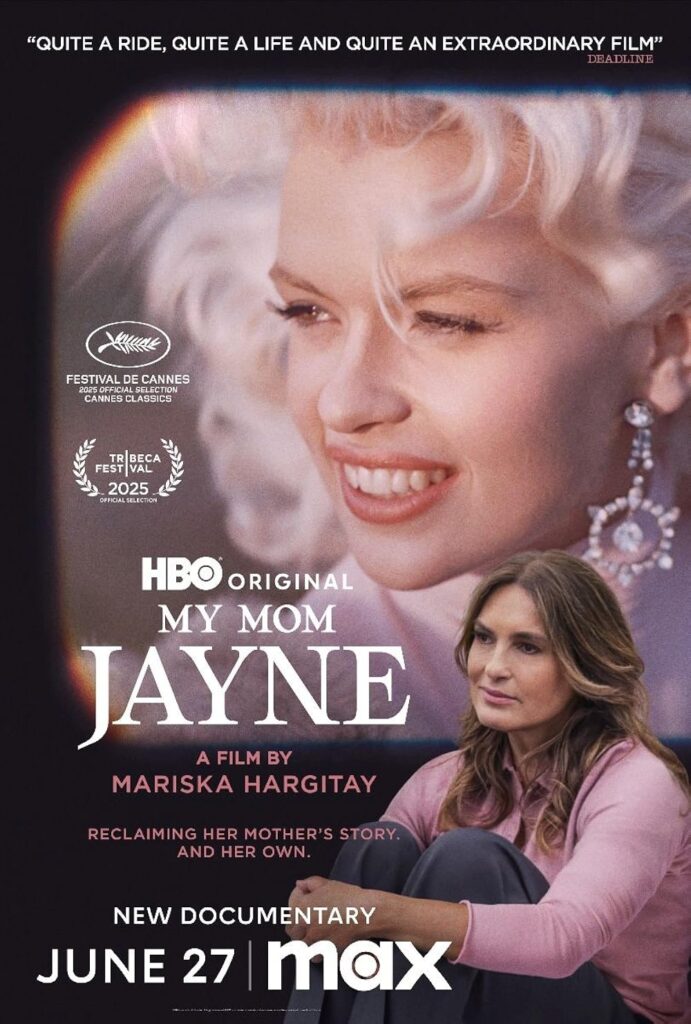
In 1980, her life and career with Mickey Hargitay were portrayed in a highly rated 1980 movie of the week with Loni Anderson portraying Mansfield and Arnold Schwarzenegger as Hargitay. One of Jayne Mansfield’s offspring indeed reached the sustained acting success that eluded Jayne. Mariska Hargitay, the second youngest of her children, is a movie and television actress who is beloved by many. Her career includes a co-starring role in the long-running TV series Law and Order: Special Victims Unit.
The best of Mansfield’s career was her early years in Los Angeles, as she crafted her outlandish style and, with that, she left her indelible mark on the history of Hollywood that lives on today, thanks to frequent showings of her most memorable films on Turner Classic Movies, as well as being available to stream, and on DVD.
Watch HBO Max to see Mariska Hargitay’s documentary, My Mom Jayne, that debuts June 27 here.

